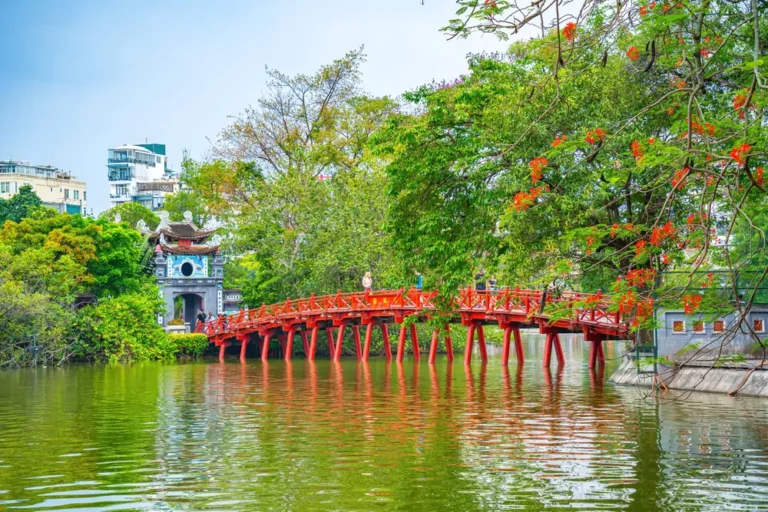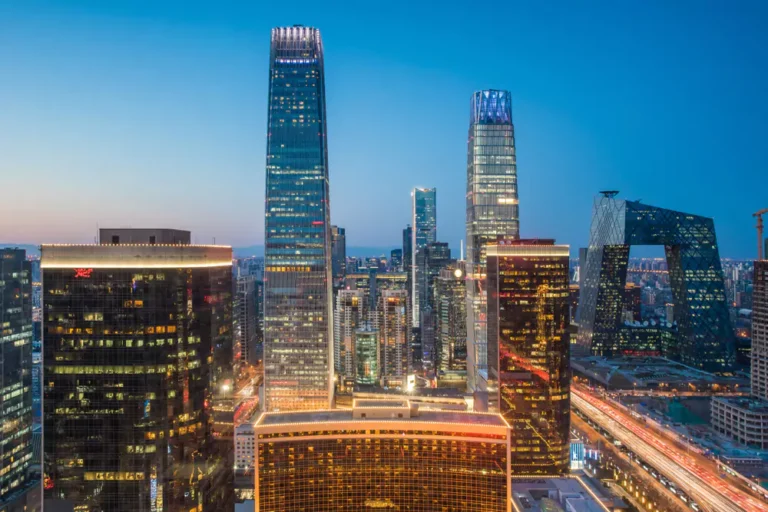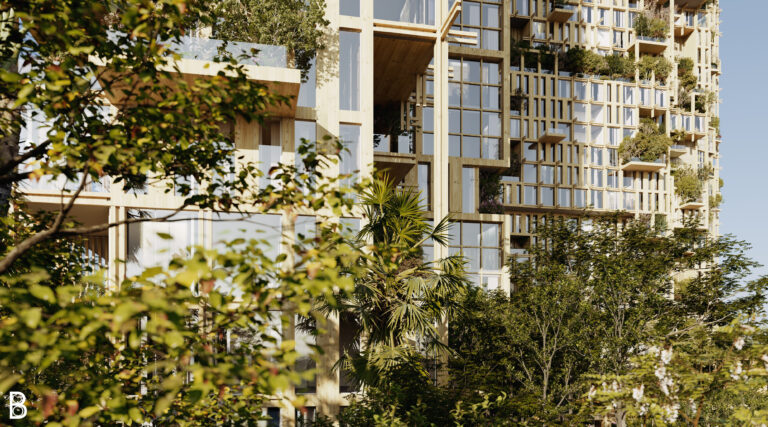Redefining small apartment interior design with sustainability and human-centricity
This article is based on a Case Study presentation at the PropertyGuru Asia Real Estate Summit originally presented on 8 December 2022.
The transformation of apartment design, from traditional layouts to open-concept spaces, and the emerging trend of sustainable and human-centred approaches

Apartment living has a rich history dating back centuries, from the construction of ancient Roman “insulae” to the modern high-rise complexes in bustling urban centres. Throughout this time, apartment designs have adapted to changing needs and lifestyles.
For many of today’s sustainability-conscious residents, the significance of green apartments cannot be overstated. Therefore, it’s important to recognise the importance of environmentally friendly materials and explore innovative examples of sustainable interior design. It also pays to examine the need to strike a balance between environmental consciousness and urban living requirements in creating functional and supportive living spaces for future generations.
Historical evolution of apartment design
In ancient Rome, “insulae”, which were built using concrete–covered brick and often reached five stories in height, provided housing for a majority of the urban population. By contrast, in the modern times, numerous high-rise complexes in bustling urban centres housed much of today’s population. These types of housing throughout time shows that apartment living has been a vital aspect of accommodating growing populations.
In the old days, apartments had traditional layouts, featuring separate rooms for various functions and small divisions for privacy. However, the latter half of the 20th century saw a shift towards open-concept floor plans, aiming to create more spacious and interconnected living areas. The 2000s and 2010s witnessed the rise of compact living and micro-apartments, though these were criticised for potential inhumanity and over-commercialisation.
The need for greener and more flexible small apartment design
The best examples of modern apartment design embraced sustainability, emphasising energy efficiency, natural light, and eco-friendly materials. While the energy and operational aspects of buildings often take the spotlight, the interior design’s impact is often overlooked. Regular apartment renovations result in significant waste due to material replacements. As such, a more human-centred approach to interior design is needed, one that better reflects individual stories and prioritises residents’ needs, well-being, and lifestyles.
At Never Too Small, we have carefully documented more than 146 small apartment design projects and the architects and designers behind them. These projects come from 43 cities across 23 countries. While doing our research, we observed a recurring trend in small apartment renovations: a frequent reconfiguration of spaces. Interestingly, this trend is more common in small apartments than in larger properties. The reason behind this was revealed when architects and designers shared the design briefs they received from their clients. Most of these briefs were centred on personalisation, taking into account factors, such as the clients’ lifestyle, cultural background, and household configuration.
Designing small spaces requires a different approach compared to larger houses, as physical expansion is not an option. Therefore, customisable floor plans and spatial organisation become crucial. These changes often involve knocking down walls, removing old fixtures, and repositioning rooms, leading to substantial costs and generating considerable waste.
Addressing construction waste and embracing modularity
Construction waste is a significant environmental concern, accounting for a substantial percentage of global waste generation. About 35% of landfill waste is generated by the construction industry, with millions of tons of debris and rubble disposed of each year around the globe. Construction-related activities contribute to approximately 23% of total CO2 emissions globally. Our traditional design approach for new apartment buildings requires a complete rethink and thorough examination in order to usher in a much–needed renaissance.
A flexible and fully modular system is the key to designing future small apartments. By integrating Design for Disassembly principles and adopting a kit-of-parts approach in the design process, we enable easy assembly and disassembly of components primarily to promote sustainability and adaptability. These standardised elements offer numerous possibilities to combine and rearrange, which, in turn, allows residents to personalise and reconfigure spaces to their preferences. This approach fosters a sense of ownership and ensures that the living environment can grow and change with the occupants’ evolving needs and lifestyles.
By prioritising functionality and spatial organisation over aesthetics, we can create small apartments that cater to residents’ specific requirements without limiting them. This not only enhances the quality of living but also contributes to reducing construction waste, making it a win-win solution for both residents and the environment.
In one Never Too Small episode, we showcased Bao Living, a design company from Belgium, and their innovative furniture system called SAM. SAM is a fully circular and modular system that integrates the kitchen, bathroom, storage, and other functionalities. Its unique design allows for easy reconfiguration, allowing users to mix and match modules according to their needs and take the modules with them if they need to move.
As their lifestyles evolve, residents can effortlessly add more modules to adapt the system to, which promotes longevity and significantly reduces waste. Although some assistance might be needed to relocate modules, this option remains more cost-effective and generates less waste compared to traditional built–in cabinetry. Bao Living’s SAM system effectively sets a new standard for sustainable and adaptable furniture design.
Innovative and sustainable material choices
Another common trend we’ve discovered in apartment renovation is redecorating. Apartments frequently undergo upgrades every few years, driven by residents’ desire for a change in style or when new occupants move in and seek to rejuvenate the space. These renovations primarily focus on surface elements, such as wall colours, floor materials, and kitchen cabinets. In many cases, however, the existing materials still have plenty of life left and remain in good condition. To make these upgrades more sustainable, it is essential to opt for materials that are low-tech, easily recyclable, and have a low carbon footprint. By choosing environmentally friendly materials, we can ensure that the renovation process is not only aesthetically pleasing but also aligns with our commitment to reducing environmental impact and promoting a greener future.
Smile Plastics, which we featured on our Wonderful Waste documentary, specialises in creating innovative and sustainable materials for design and architecture. Smile Plastics repurpose waste materials, such as discarded plastics and other post-consumer waste, to produce unique and characterful decorative panels and other products.
Smile Plastics’ materials find diverse applications within interior design, ranging from furniture to wall claddings. Their waterproof and highly durable nature renders them ideal for bathrooms, kitchens, and shop fittings. These materials look great and are eco-friendly, offering a sustainable option compared to traditional materials. What’s even more impressive is that Smile Plastics has implemented a buyback policy, allowing them to recycle both used and unused materials and transform them into new panels.
Integrating locally sourced materials into design
Designing future apartments with a circular approach is essential for sustainability. This approach begins with selecting durable and eco-friendly materials that can be reused or repurposed easily. Proximity and origin are the other key factors, whereby the use of local materials is prioritised to minimise the need for shipping and reduce the environmental impact. For instance, where locally sourced corks are available, these can be incorporated into designs for cabinet doors, walls, and flooring. Cork is flexible, durable, and moisture-resistant, making it a great option. Moreover, it can be painted over and can be easily refinished to update its appearance.
For those situated in Indonesia, it’s well worth considering the incorporation of Rebrick into your projects. Rebrick specialises in producing bricks and blocks from discarded plastic waste. Notably, Rebrick was the recipient of the Technology Innovation Award at the Asia Real Estate Summit (ARES) 2022.
By using locally produced materials, we ensure that replacements for damaged products are sourced from local producers, reducing the reliance on imports and promoting local job opportunities. This approach also gives the end design a distinct identity and contributes to its sustainability in the long term.
A necessary renaissance
By embracing sustainable and human-centred approaches, we can create environmentally conscious living spaces that cater to individual needs. As we reimagine apartment living, we must strike a balance between urban requirements and environmental responsibility, ensuring that our designs support the well-being of residents while minimising our ecological footprint.
Ultimately, apartment design should continue to evolve in response to societal changes and technological advancements, shaping a greener and more inclusive urban landscape for generations to come. Just as Swiss-French architect Le Corbusier once stated, “Modern life demands, and is waiting for, a new kind of plan, both for the house and the city.”
This article was originally published on ARES White Paper Volume 3. For more information, visit AsiaRealEstateSummit.com or email [email protected].
Recommended
Designing resilient cities: Hanoi’s path to sustainable urban living amidst pollution challenges
Hanoi’s worsening annual toxic smog is highlighting the pressures of balancing sustainability with rapid economic growth
ARES White Paper Volume 3: The era of adaptive reinvention
Pioneering sustainable and innovative practices in urban development
ARES White Paper Volume 2: Unravelling the power of data revolution in real estate
Insights on proptech, smart cities, and sustainable development
ARES Digital White Paper Volume 1: The fundamentals of responsible building
Green and climate heroes join forces to discuss how Asia Pacific can weather the current environmental crises and the looming effects of climate change






